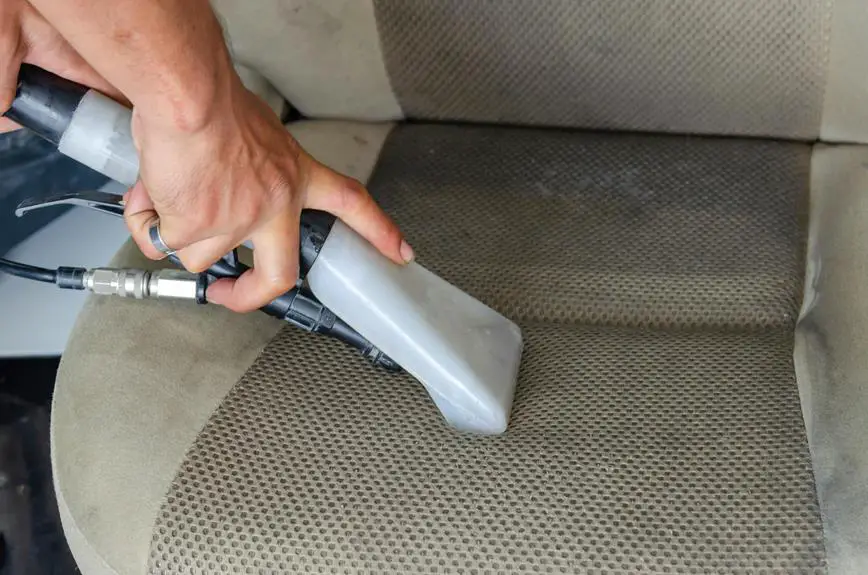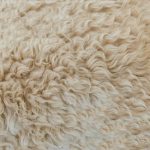When it comes to maintaining the beauty of your voile fabric, understanding the right techniques is crucial. You should start by considering how you wash it—gentle methods can make all the difference. Instead of tossing it in with the regular laundry, think about hand washing or using a delicate cycle. And don't forget about drying; air drying might be your best bet. But what happens when you need to use a dryer? The answers might surprise you, as they could prevent that dreaded shrinking and keep your voile looking pristine.
Table of Contents
Understanding Voile Fabric
Voile fabric is a lightweight, sheer material often made from cotton or polyester, making it perfect for curtains and lightweight garments. Its delicate nature gives it a soft drape, enhancing the aesthetic of any room or outfit. When you touch voile, you'll notice its smooth texture, which can add a touch of elegance to your home decor or wardrobe.
Because voile is so light, it's essential to handle it carefully during sewing or crafting. You might find that it frays easily, so using a serger or finishing the edges with a zigzag stitch can help maintain its integrity. Additionally, consider using a universal needle when sewing with voile, as this helps prevent snagging or tearing.
When choosing voile for your projects, pay attention to the weave and fiber content. Cotton voile is breathable and great for summer wear, while polyester voile is more durable and resistant to wrinkles. If you're looking for a fabric that offers both beauty and practicality, voile is an excellent choice. Understanding its characteristics will help you select the right type for your specific needs and ensure your creations last.
Washing Techniques for Voile
When washing voile, it's crucial to use gentle techniques to preserve its delicate fibers and prevent any shrinking. Start by reading the care label on your fabric for specific instructions. Generally, hand washing is the safest method. Fill a basin with cool water and add a mild detergent. Gently agitate the water and submerge the voile, allowing it to soak for about 10 minutes.
If you prefer machine washing, use the delicate cycle with cold water and a mesh laundry bag to protect the fabric. Avoid bleach and harsh detergents, as they can damage the fibers.
Here's a quick reference table to help you with washing techniques:
| Washing Method | Recommended Action |
|---|---|
| Hand Wash | Soak in cool water for 10 mins |
| Machine Wash | Use delicate cycle, cold water |
| Detergent | Mild detergent only |
| Drying | Avoid, focus on drying methods next |
After washing, never wring or twist the fabric. Instead, lay it flat on a clean towel to absorb excess water. Following these tips will help keep your voile looking fresh and beautiful.
Drying Methods to Avoid Shrinking
After washing your voile, choosing the right drying method is key to preventing shrinkage. Instead of tossing it in the dryer, consider air drying. Hang your voile on a clothesline or a drying rack in a well-ventilated area. This gentle method helps maintain the fabric's shape and size.
If you need to use a dryer, opt for the lowest heat setting. High heat can cause your voile to shrink significantly, so keep it short and check the fabric frequently. Remove it while it's still slightly damp to minimize the risk of shrinkage.
You can also lay your voile flat on a clean, dry towel to dry. This method allows for even air circulation and prevents stretching or distortion. Just be sure to reshape it gently to its original form.
Avoid wringing out your voile to remove excess water, as this can lead to unwanted creases and shrinkage. Instead, gently press the fabric between your hands or use a towel to absorb moisture.
Storing Voile Properly
To keep your voile in great condition, it's essential to store it properly after drying. Begin by ensuring your voile is completely dry to prevent any mold or mildew. Once dry, fold it neatly instead of hanging, as this helps maintain its shape and prevents stretching. Use acid-free tissue paper to separate layers if you're stacking multiple pieces.
Here's a quick reference table for storing voile:
| Storage Method | Pros | Cons |
|---|---|---|
| Folded in a drawer | Space-saving | May crease if not careful |
| Hanging on a hanger | Reduces creases | Can stretch fabric over time |
| Rolled in a tube | Prevents creases | Requires more storage space |
| Laid flat in a box | Keeps shape and reduces damage | Takes up more space |
| Vacuum-sealed bag | Protects from dust and pests | Can compress delicate fabrics |
Make sure to store your voile in a cool, dry place away from direct sunlight. This way, you'll keep it looking fresh and vibrant for your next sewing project!
Ironing and Pressing Tips
Ironing voile requires careful attention to avoid damaging the delicate fabric.
Start by setting your iron to the lowest heat setting, usually labeled for delicate fabrics. Always use a pressing cloth—this acts as a barrier between the iron and the voile, preventing any direct heat contact.
Before you begin, ensure your voile is slightly damp. If it's dry, lightly spritz it with water to make the fabric more pliable.
As you press, work in small sections, gently gliding the iron over the fabric without applying too much pressure. Avoid dragging the iron, as this could stretch or distort the fibers.
If you notice any stubborn wrinkles, try steaming instead of direct ironing. Hold the iron a few inches above the fabric and let the steam penetrate the fibers. This method is gentler and can help maintain the fabric's original shape.
Choosing the Right Products
Choosing the right products can make a significant difference in preventing voile from shrinking. Start by selecting a gentle detergent specifically designed for delicate fabrics. Look for labels that mention “cold water” or “hand wash” to ensure you're treating your voile with care. Avoid using bleach or fabric softeners, as these can damage the fibers and lead to shrinkage.
When it comes to washing, opt for a cold water cycle and a gentle spin setting. If your voile is particularly delicate, consider hand washing instead. This method allows you to control the agitation and minimize stress on the fabric.
For drying, skip the dryer altogether. Instead, hang your voile to dry in a shaded area to prevent exposure to direct sunlight, which can weaken fibers and cause shrinkage. If you need to store your voile, use breathable storage bags to avoid moisture buildup.
Frequently Asked Questions
Can I Use Bleach on Voile Fabric?
You shouldn't use bleach on voile fabric, as it can weaken the fibers and cause discoloration. Instead, opt for mild detergents and gentle washing methods to maintain the fabric's integrity and appearance.
Is Voile Fabric Safe for Children's Clothing?
Yes, voile fabric is generally safe for children's clothing. It's lightweight and breathable, making it comfortable. Just ensure you choose high-quality voile and wash it properly to maintain its softness and avoid any irritations.
How Does Voile Compare to Other Fabrics Regarding Shrinkage?
Voile generally shrinks less than many other fabrics, like cotton or linen. Its lightweight nature helps it maintain shape, but you should always check care instructions to ensure you're minimizing any potential shrinkage.
Can I Sew With Voile Without Pre-Washing?
You can sew with voile without pre-washing, but it's risky. Voile may shrink after washing, affecting your project's fit. If you want to avoid surprises, pre-wash it to ensure your final piece looks perfect.
What Should I Do if My Voile Shrinks Anyway?
If your voile shrinks, you can gently stretch it back to shape while it's damp. Lay it flat to dry, or use a cool iron. Just be careful not to damage the fabric further.
- How Does Ring Spun Cotton Affect Garment Fit and Shape Retention? - August 13, 2024
- What Are the Challenges in Producing Ring Spun Cotton? - August 13, 2024
- Is Ring Spun Cotton Suitable for Plus-Size Clothing? - August 13, 2024







